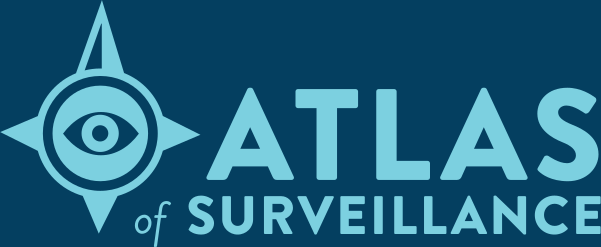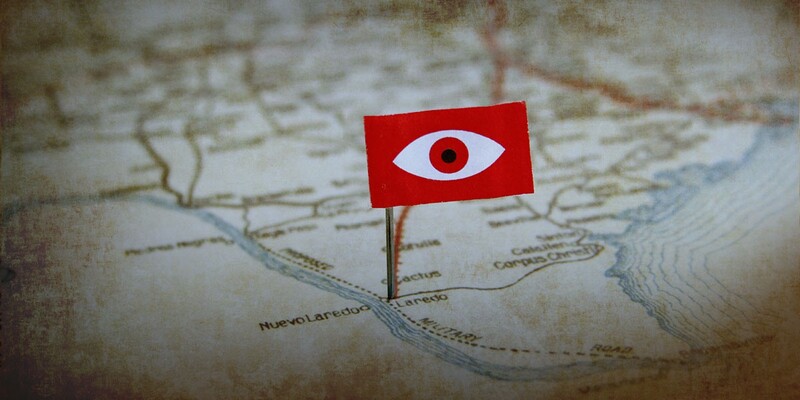
 The sixth largest county in the state and the largest county in South Texas in terms of land, Webb County shares approximately 100 miles of its border with Mexico. The U.S. Census estimates Webb County’s population at about 276,000 residents with about 262,000 of the residents living in the city of Laredo, making Laredo the third most populated city along the U.S.-Mexico border. Webb County Sheriff’s Department and Laredo Police Department are the most notable law enforcement agencies in the county.
The sixth largest county in the state and the largest county in South Texas in terms of land, Webb County shares approximately 100 miles of its border with Mexico. The U.S. Census estimates Webb County’s population at about 276,000 residents with about 262,000 of the residents living in the city of Laredo, making Laredo the third most populated city along the U.S.-Mexico border. Webb County Sheriff’s Department and Laredo Police Department are the most notable law enforcement agencies in the county.
Law enforcement in the region deploy various surveillance technologies, including drones, body-worn cameras, and automated license plate readers. The federal government also keeps a close eye on the border region with technologies that include automated license plate readers, sensor towers, drones, and surveillance balloons.
Since 2016, Webb County Sheriff Martin Cuellar has promoted a proposal he calls Operation Border SMART, which would hire veterans to staff a surveillance command center, including reviewing video and sensor data captured along the border and controlling drones. However, according to the Laredo Morning Times, the Texas legislature rejected funding for the program during its 2019 session.
Quick Links:
- Drones
- Body-worn cameras
- Automated-license plate readers
- Camera networks and real-time crime center
- Face recognition
- Texas spy planes
- Federal surveillance technologies
Drones
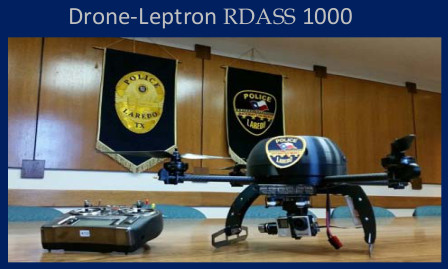
Laredo Police Department drone. Source: Annual Budget Report 2016-2017
Drones are remote-controlled vehicles that police use for aerial surveillance. Local agencies generally use compact, less expensive drones known as small unmanned aerial systems (sUAS) or quadrotors, as opposed to the larger systems deployed by the U.S. military and Department of Homeland Security.
Webb County Constables received a drone as a donation for use in “emergency situations.” The drone is a DJI Inspire 1v 2.0 that records 4K video and comes with a FLIR camera for thermal imaging.
As of 2016, the Laredo Police Department has at least one drone. It is for “search and rescue for the SWAT team, crime scenes, and action scenes,” including hostage situations, according city council records. The drone is made by Leptron and has a GoPro attached to it, allowing the device to take still or moving images.
For more information:
Body-Worn Cameras
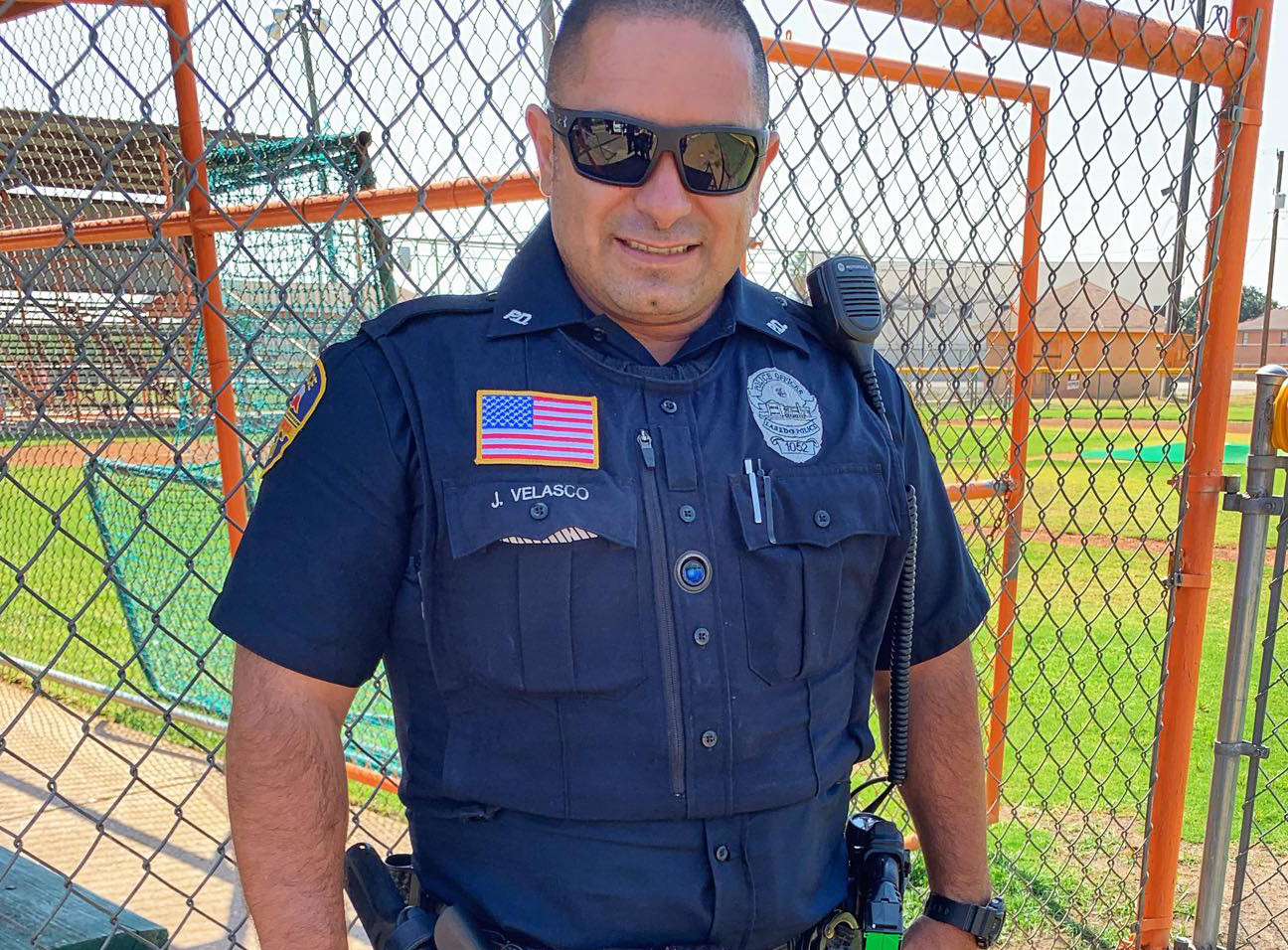
A body-worn camera lens is visible between the buttons on a Laredo Police officer's vest. Source: Laredo Police Department Facebook
Body-worn cameras (BWCs) are small devices attached to an officer’s uniform that capture video and audio of the officer’s encounters with the public. Often billed as a measure to enhance police accountability, BWCs can also function as a mobile surveillance network.
The Laredo Police Department distributes BWCs to officers who are regularly engaged in traffic patrol, detain or stop vehicles, and respond directly to calls from the public. As of February 2019, the Laredo Police Department has obtained at least 15 BWCs through grants and hopes to equip 359 of its officers in the future. The cameras, manufactured by Utility Associates, are partially concealed: all that is visible is the lens, which is placed a long the buttons on a police officer's shirt or vest.
In September 2017, the Laredo Independent School District got a grant from the federal Bureau of Justice Assistance to purchase 36 BWCs, according to the Laredo Morning Times. "Anytime that the officer is being called on and they're requesting for assistance, we automatically turn on the cameras for those situations," a police official told the newspaper "It doesn't matter if it's at an elementary all the way to high school or even certain offices — everything is going to be recorded with the officer because they're requesting a service call for a police officer.” The cameras are made by Reveal and record 30 seconds before an officer initiated filming.
The Webb County Sheriff’s Office and the United Independent School District have also received Bureau of Justice Assistance grants for body cameras.
For more information:
- City of Laredo 2019 Federal Legislative Agenda
- Laredo Morning Times: Laredo ISD police adding body cameras to uniforms
- Laredo Morning Times: Body camera policy eyed
- KGNS TV: Webb County Sheriff's Office to Purchase Body Cameras
Learn more about body-worn cameras.
Automated License Plate Readers
Automated license plate readers (ALPRs) are networks of cameras used to track the movements of vehicles. Police attach cameras to patrol cars or fixed locations, like highway overpasses, to amass a searchable database that can reveal a driver’s movements. Police also add license plates to a “hot list” to get real-time alerts whenever the vehicle is photographed by an ALPR.
In 2019, the Webb County Sheriff’s Office announced the approval for 10 new patrol units. According to KGNS TV, these vehicles come equipped with cameras and automated license plate readers. The Laredo Police Department is in the process of purchasing ALPRs from Wireless CCTV, city council meeting minutes show. The systems will be paid for through Operation Stonegarden, a program that funds local law enforcement to cooperate with federal agencies in border operations. These ALPR trailers will be placed in high traffic areas along roads that the U.S. Border Patrol has identified as hot spots for smuggling.
Federal agencies actively use ALPRs in the region, including the U.S. Drug Enforcement Administration and U.S. Customs and Border Protection.
For more information:
- KNGS.tv: Webb County Sheriff's Office receives ten new patrol units
- City of Laredo: City Council Meeting
Learn more about automated license plate readers.
Camera Networks and Real-Time Crime Center
In 2018, the Laredo Police Department received approval to establish a $1.4 million real-time crime center in the city. Most of the funding will go to putting surveillance cameras around the city so that the police department can gather real-time information and relay it to investigators who may be responding to a crime scene. As the Laredo Morning Times reported, schools in the area have also agreed to feed data to the real-time crime center. The Webb County Sheriff’s Office also operates a network of 10 cameras along border, according to KGNS-TV.
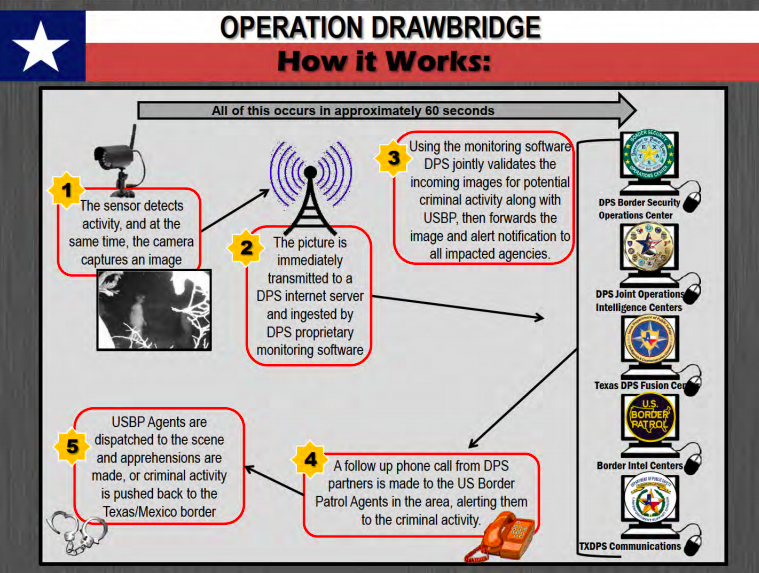
Operation Drawbridge flowchart. Source: Texas Department of Public Safety
The Texas Department of Public Safety has installed hundreds of cameras in border areas through a program called Operation Drawbridge. The $300 cameras are designed for capturing wildlife, but have been repurposed to photograph human movements. The low-light capable, motion-triggered cameras are monitored around the clock by the Texas Fusion Center, the Texas Border Security Operations Center, DPS Communications facilities, and U.S. Border Patrol Facilities. Texas DPS claims the cameras have been used to apprehend 250,000 individuals and the seizure of 248 tons of marijuana as of January 2019.
For more information:
- LMT Online: $1.4M to build real-time crime center for Laredo Police Department Approved
- Laredo Police Department 2018 Annual Report
- Texas Department of Public Safety: Operation Drawbridge
Learn more about surveillance camera networks.
Face Recognition
The Texas Department of Public Safety (DPS) has used face recognition since 2005. A 2015 study by the Center on Privacy & Technology at Georgetown Law found that DPS can search 24-million driver license and ID photos and 24.9-million mug shots in the FBI’s Next Generation Identification Interstate Photos System. Texas DPS accepts search requests from both local and federal law enforcement agencies.
For more information:
Learn more about face recognition.
Texas Spy Planes
Privacy Information
This map will serve content from arcgis.com, a third-party host, which may restrict access for users on Tor or users with third-party cookies blocked. The map requires use of Javascript and is subject to the ArcGIS Privacy Policy.
If you're having trouble viewing the map, you can Search the Data instead.
Map showing Texas Department of Public Safety spy plane flight courses. Source: Texas Observer
As part of a program called Operation Secure Texas, the Texas Department of Public Safety (DPS) has spent more than $15 million on two high altitude surveillance planes that fly more than two miles above the Earth. The Texas Observer found that from January 2015 to July 2017, DPS flew these planes above Webb County and Laredo at least 54 times, most with the listed purpose of patrolling the border.
For more information:
Federal Surveillance Technologies
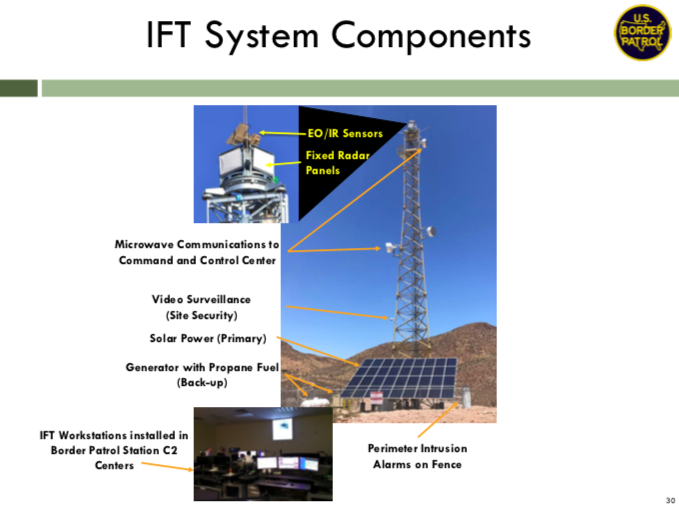
The components of an integrated fixed tower. Source: Border Patrol industry day presentation
Webb County is located in U.S. Customs and Border Protection’s Laredo Sector. The CBP has two Integrated Fixed Tower (IFT) systems and as many as 107 Remote Video Surveillance Systems (RVSS) in the sector. IFT systems automatically detect and track items of interest and provide operators with data, video, and geospatial location of selected items of interest to identify and classify them. RVSS technology provides long to short range surveillance with cameras, radio, and microwave transmitters to send video to a control room for an operator to remotely detect, track, identify, and classify targets in the video feed.
CBP also has an “aerostat” stationed nearby the Laredo Sector that can be used for surveillance in Webb County. This aerostat is an unmanned blimp that has a radar that can detect all flying aircraft within 200 miles. According to data published by the Government Accountability Office, between 2014 and 2016, these aerostats assisted in 326 apprehensions and the seizure of 347 pounds of cannabis in the Laredo Sector.
For more information:


